Our Lady's Close
Upper Norwood
SE19 3FA
Art - VI Form
Subjects
-
Art - VI Form List Item 2
-
New List ItemBiology - VI Form
-
New List ItemBusiness Studies - VI Form
-
New List Item Write a description for this list item and include information that will interest site visitors. For example, you may want to describe a team member's experience, what makes a product special, or a unique service that you offer.
Chemistry - VI Form -
New List Item Write a description for this list item and include information that will interest site visitors. For example, you may want to describe a team member's experience, what makes a product special, or a unique service that you offer.
Computer Science - VI Form -
New List Item Write a description for this list item and include information that will interest site visitors. For example, you may want to describe a team member's experience, what makes a product special, or a unique service that you offer.
Drama - VI Form -
New List Item Write a description for this list item and include information that will interest site visitors. For example, you may want to describe a team member's experience, what makes a product special, or a unique service that you offer.
English - VI Form -
New List Item Write a description for this list item and include information that will interest site visitors. For example, you may want to describe a team member's experience, what makes a product special, or a unique service that you offer.
Extended Project Qualification - VI Form -
New List Item Write a description for this list item and include information that will interest site visitors. For example, you may want to describe a team member's experience, what makes a product special, or a unique service that you offer.
French - VI Form -
New List Item Write a description for this list item and include information that will interest site visitors. For example, you may want to describe a team member's experience, what makes a product special, or a unique service that you offer.
Further Maths - VI Form -
New List Item Write a description for this list item and include information that will interest site visitors. For example, you may want to describe a team member's experience, what makes a product special, or a unique service that you offer.
Geography - VI Form -
New List Item Write a description for this list item and include information that will interest site visitors. For example, you may want to describe a team member's experience, what makes a product special, or a unique service that you offer.
History - VI Form -
New List Item Write a description for this list item and include information that will interest site visitors. For example, you may want to describe a team member's experience, what makes a product special, or a unique service that you offer.
Latin - VI Form -
New List Item Write a description for this list item and include information that will interest site visitors. For example, you may want to describe a team member's experience, what makes a product special, or a unique service that you offer.
Music - VI Form -
New List Item Write a description for this list item and include information that will interest site visitors. For example, you may want to describe a team member's experience, what makes a product special, or a unique service that you offer.
Mathematics - VI Form -
New List Item Write a description for this list item and include information that will interest site visitors. For example, you may want to describe a team member's experience, what makes a product special, or a unique service that you offer.
Physics - VI Form -
New List Item Write a description for this list item and include information that will interest site visitors. For example, you may want to describe a team member's experience, what makes a product special, or a unique service that you offer.
Religious Studies - VI Form -
New List Item Write a description for this list item and include information that will interest site visitors. For example, you may want to describe a team member's experience, what makes a product special, or a unique service that you offer.
Spanish - VI Form
Art
Why Choose Art?
The A Level Art course will be both challenging and exciting. It affords students the chance to increase visual awareness and improve knowledge of art through expression, analysis and experimentation. The course aims to explore and develop individual interests and there is great emphasis on personal investigation.
At A level , students will study Fine Art following the AQA specification 7202 (https://www.aqa.org.uk/subjects/art-and-design/as-and-a-level/art-and-design/subject-content/fine-art)
The course is structured in a similar way to the GCSE programme, in that students produce work for 2 components. Component 1 focuses on a Personal investigation selected by the student where, along with a substantial body of work, there is also a written element to complete alongside. Component 2 is based on themes set by the exam board and a 15 hour piece will be produced at the end.
What study skills do you need?
A Level Art students should be open minded, determined and adventurous. The course requires independent thinking and encourages students to find their feet on their own artistic journey.
What are the aims of the course?
The course provides the opportunity to explore a range of two and three-dimensional approaches and to work in a range of media: painting, drawing, textiles, printmaking, sculpture and life drawing.
There will be two double lessons, based on the practical aspects and a single, which will be focussed on the theoretical aspect of the students enquiry. The open studio allows for the essential part in the pupils development.
GCSE requirements
Grade 7 or above in Art GCSE.
Course Content
The initial part of the A level course allows for students to explore and practice working in various media through a series of workshops. The intention is to provide a wide range of skills so that when it comes to selecting a theme for The Personal Investigation each can use their knowledge and experience to recall useful processes and techniques.
The Personal Investigation requires students to independently select a theme or concept to explore in depth. Students must be able to show development and refinement of ideas from start to final outcomes. As well as producing a body of practical work the students will also be required to hand in a written response between 1000 – 3000 words. This piece should be closely linked and in support of their practical work.
The exam component commences in February and makes up the remaining 40% of the total mark. At the end of the exam unit the students will produce a 15 hour piece in their choice of media. Much like the GCSE exam unit, themes are set by the AQA board.
The A level components are:
- Component 1: Personal Investigation 60%
- Component 2 : Exam unit set by AQA 40%
Specification (https://www.aqa.org.uk/subjects/art-and-design/as-and-a-level/art-and-design/subject-content/fine-art)
AQA QAN code: AS: 601/4706/4; A: 601/4456/7
Further education and career opportunities
Studying Art A level provides a wealth of opportunities for future career prospects. You will have developed your independent thinking, learnt to express yourself and let your imagination and creativity flourish.
Further education opportunities:
Textile/ fashion design, 3D/product design, Photography, Graphic Communication, Architecture, Interior Design or Fine Art.
Possible career opportunities:
Animator, Architect, Art therapy, Art restoration, Fashion design, Film/video maker, Fine artist, Furniture designer, Illustrator, Jeweller, Museum/gallery conservator, Product Design, Theatre design.
Related activities
- In-school exhibitions
- A level study space available for use during and after school
- Life class sessions
- Workshops and tutorials with practising artists
- Trips to London Galleries / museums
Get more information
Thank you!
Please try again later.
CONTACT US
020 8674 7229
enquiries@thelaurelsschool.org.uk
5 Our Lady's Close,
Upper Norwood, SE19 3FA
ABOUT
ACADEMICS


All Rights Reserved | The Laurels |
Web design by www.beardfish.co


